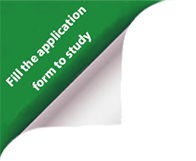The existence of magnetoreception (the ability to perceive a magnetic field) has already been proven in many mammalian species. However, it remains unknown how exactly it works and by which organs perceptions are received and processed. Researchers from the Faculty of Forestry and Wood Sciences at the CULS and the Faculty of Biology of the German University of Duisburg-Essen focused in their study on a mechanism enabling Dzungarian hamsters to use magnetoreception for orientation. Two possible mechanisms are discussed, dependent or independent of light.
How both mechanisms work is rather assumed. In the case of light dependence, biochemical processes are the basis and the centre are probably located in the eye, where the cryptochrome protein in the retina reacts to the magnetic field. The light-independent mechanism could operate on the principle of iron-containing particles, probably in the form of magnetite, which can be found anywhere in the animal's body.
To verify the mechanisms, the authors used a method consisting of a training and testing phase. In the training phase, the hamsters were first to learn which position to prefer for nest building according to the magnetic field. A suitable place for the nest is hidden in the dark. Therefore, half of the breeding plastic container was darkened and half lit. A test phase followed, in which the hamsters were moved to a completely darkened circular arena. As a result, they could not orient themselves visually or according to the shape of the walls around them.
It was found that the position of the nests built by hamsters in complete darkness largely agrees with the position in the dark part of the breeding vessel during the previous phase with the light. The nests were therefore located in the same cardinal direction. This suggests that hamsters are able to orient their nests in a certain direction according to a light-independent magnetoreception mechanism.
Only this mechanism was identified in this research, but research by other scientists has shown that hamsters might be able to use both mechanisms. The reality is still unclear. The authors of this study did not encounter the possibility of using both mechanisms simultaneously, and therefore assume that the learning process was successful, and the hamsters were able to distinguish the opposite poles. Nevertheless, they believe that both mechanisms are still in play and that different results can only be the result of different magnetic information available to hamsters due to different lighting conditions. It is therefore possible that the hamsters first used a light-dependent mechanism during the training phase to adjust the magnetic field, and then were able to translate this information into a new situation and environment in complete darkness and build their nests in the direction where they assumed a dark end according to magnetoreception. This clearly proves a mechanism independent of light.
There are still many unanswered questions in the field of magnetoreception. The authors of the article suggest focusing in the future on how long hamsters are able to remember the learned information about the direction of orientation. Histological examinations (study of the microscopic structure of tissues and organs) are also offered as an important source of information, which would provide an insight into the anatomical basis of the mechanisms of magnetoreception.
Magnetoreception research is embarking on a new field of perception. Instead of the well-known five senses, it turns out that many animals are not only affected by magnetism but can perceive and use it to some extent. New knowledge allows us to better understand the behaviour of different species.
Malewski S., Begall S., Burda H. Light-independent magnetosensitive behaviour in the Djungarian hamster (Phodopus sungorus). Elsevier. Mammalian Biology. 91. 2018. https://doi.org/10.1016/j.mambio.2018.03.015
Prof. RNDr. Hynek Burda, CSc.
He studied zoology at Charles University in Prague. Between 1977 and 1995, he worked at the Czechoslovak Academy of Sciences, the University of Zambia in Lusaka and the J. W. Goethe University in Frankfurt am Main. Since 1995 he has been a professor at the University of Duisburg - Essen, where he headed the Department of General Zoology until last year. He also lectures and conducts research at the Department of Biology of the University of South Bohemia in České Budějovice and at the Department of Game Management and Wildlife Biology, FLD in Prague. At present, he focuses mainly on sensory biology and ecology of mammals, focusing mainly on small and underground mammals.
Prepared by: František Viktorin

